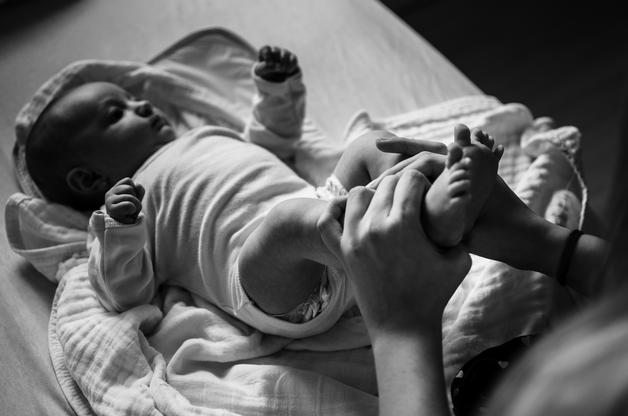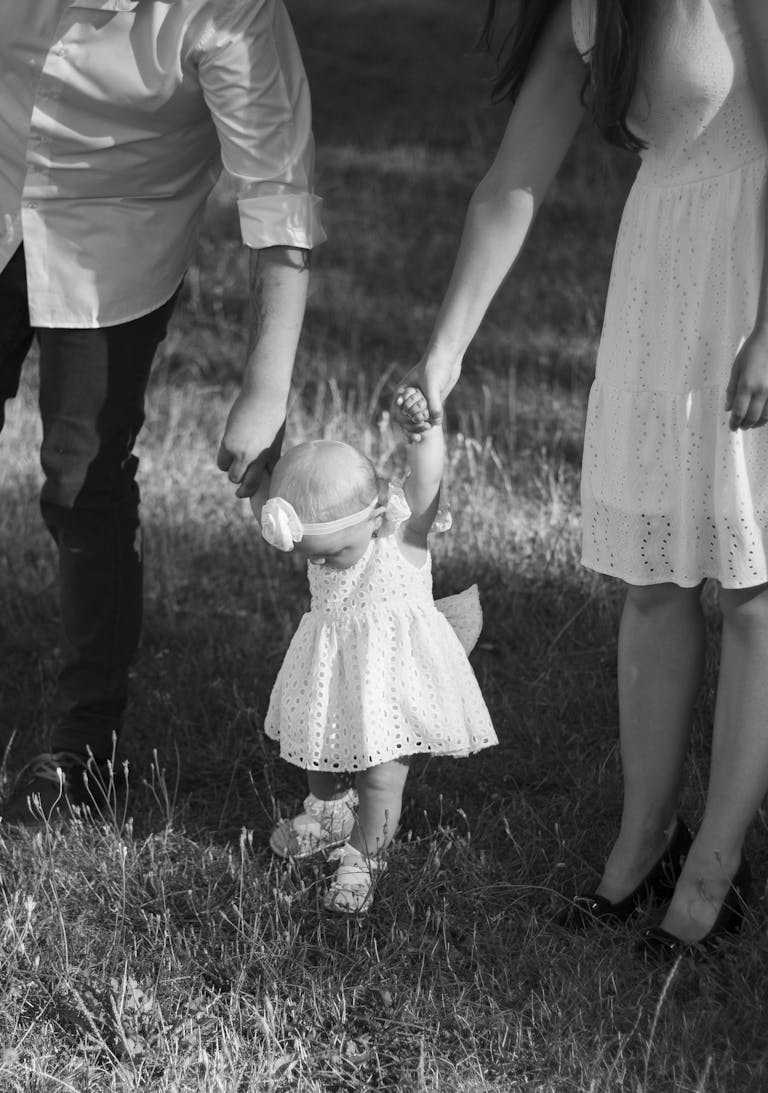Welcoming a newborn into your world brings delight and, naturally, a flurry of questions. How quickly will your little one start exploring their abilities? How do you identify the first real step toward independence? “At what age does a baby roll over”—this seemingly simple question intrigues and sometimes unsettles parents longing to understand every detail of their child’s early days. The curiosity is understandable. Some babies appear eager to move almost from birth, while others seem content to observe quietly, showing little urgency to change positions. What is considered typical? When is intervention warranted? Here, both medical uncertainties and practical worries converge: safety, normal variations, early or late bloomers, and the means to nurture healthy development. Together, let’s unfold the complexities of this milestone—not simply when it occurs, but also what it signals for your child’s health, wellbeing, and future progress.
When do babies start to roll over? Milestone timeline and individual patterns
You may find yourself watching for those first deliberate movements, holding your breath during tummy time, and wondering, “At what age does a baby roll over?” The answer, while straightforward, comes with delightful unpredictability. Most babies roll from tummy to back between 3 and 6 months, typically around the 4-month mark. Interestingly, rolling from back to tummy—an action that demands more coordination—often appears closer to 5 to 7 months. Here’s the twist: each child follows their own unique timeline, and this is normal. Some infants show off their new skills early, some a little later; neither scenario should be a source of undue concern.
A blend of genetics, muscle development, temperament, and opportunity for movement all influence timing. It is common for caregivers to spot “mini-attempts”: rocking from side to side, propping up on forearms, or tiny grunt-filled efforts to shift position. These gestures, subtle yet significant, mark the slow but steady emergence of gross motor control.
Occasionally, a baby may take a bit longer—7 months, sometimes a little more—before confidently rolling in both directions. Should the wait stretch on, especially in the absence of other emerging motor skills, a pediatric check-in might provide helpful guidance.
Why rolling over matters: Physiology, neurology, and early autonomy
Is rolling over just a fun trick? Far from it. This movement marks an essential “developmental milestone”—a term familiar in neonatology and paediatrics, indicating stepwise achievements in mobility. Underneath the visible, playful act of turning lies a concerted effort involving the core muscles, the trunk, shoulders, and even the hips. As babies attempt this feat, neural pathways strengthen: coordination, balance, and proprioception (the body’s sense of position in space) all develop incrementally.
Rolling is not only about muscle strength. The newborn’s central nervous system orchestrates an intricate ballet—sending signals to contract, release, stabilize, and shift weight at precise moments. The same gross motor development skills honed now underpin sitting, crawling, standing, and eventually, independent walking.
Moreover, rolling grants babies a fresh perspective on their environment. Suddenly, objects once out of reach become accessible. Curiosity blossoms as cognitive, sensory, and exploratory behaviours intertwine—children start forming early understandings of spatial relationships, cause and effect, even basic problem-solving.
Early signs your baby is preparing to roll: Predictors and physical clues
The journey towards rolling over is not an overnight leap. Watch carefully—what seems like random wiggling usually hides purposeful attempts at mastering movement. Here’s what you might notice:
- Improving head and neck control: Extended tummy time helps strengthen neck flexors, allowing a steady gaze and upright head position.
- Pushing up on arms or forearms: Perhaps you see a determined push—chest lifted, arms straightening, little muscles quivering.
- Shifting weight or rocking side-to-side: Movements that might initially appear uncoordinated are actually exercises in balance.
- Reaching for toys: The act of stretching or reaching across the midline builds trunk rotation capacity, which is foundational for rolling.
- Attempts to pivot or rotate limbs: Even unsuccessful “half rolls” (ending on the side) involve the core and prep the body for the full movement.
Each of these is a physiological micro-milestone, signaling readiness for bigger actions ahead. Infants who enjoy frequent floor time, freedom to kick, and safe surfaces tend to progress with enthusiasm—although natural temperament always plays a role.
How to encourage your baby to roll over: Practical strategies for parents
Wondering how to spark curiosity or provide just the right encouragement—without overwhelming your child’s rhythm or comfort? Parents can use these research-backed tips:
- Daily tummy time: From the earliest days, supervised short sessions build endurance in the neck, upper back, and abdominal muscles. Start with a few minutes several times a day and gradually increase the duration.
- Enticing playthings: Place visually stimulating, textured toys just beyond easy reach. Soft rattles, sensory blocks, or even crinkly fabric motivate reaching and turning.
- Gentle guidance: Demonstrate the rolling motion by slowly shifting your baby’s hip or guiding the movement of one shoulder—always watchful for cues of enjoyment or discomfort.
- Engagement and feedback: Encouragement counts. Eye contact, clapping, and loving praise help transform new attempts into joyous explorations, supporting both skill mastery and emotional security.
- Creating open, hazard-free spaces: A soft play mat, clean floor, or thick blanket invites practice without risk. Remove potential choking hazards, sharp objects, or anything that could impede free movement.
Above all—let learning be organic. Forced repetition is unnecessary, even counterproductive. Celebrate every effort, every stumble, every tiny victory.
What influences when a baby rolls over? Science, nutrition, and temperament
You may wonder: beyond age, what shapes the wide variation in the age at which babies roll over? Multiple factors interact:
- Muscle tone and nutrition: Adequate intake of proteins, micronutrients, and healthy fats lays the foundation for strong, coordinated movement, supporting growth not merely in muscle bulk, but also in connective tissue and nerve conduction speed.
- Opportunity for practice: Babies confined exclusively to seats, swings, or carriers may show delayed movement milestones. Conversely, those granted regular, unstructured time on the floor tend to acquire new skills faster.
- Nature versus nurture (temperament): Some children display early boldness—rolling over months before expected, delighting in novelty. Others proceed more cautiously, needing longer intervals to warm up to new experiences.
- Developmental variation: Babies born prematurely or with certain medical diagnoses may adjust their milestone trajectory based on individualized needs. Regular medical supervision allows timely adaptation if required.
Rolling over and developmental progression: Building blocks for sitting, crawling, and beyond
“At what age does a baby roll over” is more than a trivia question—it’s the threshold into a cascade of subsequent achievements:
- Sitting: Typically established between 6 and 8 months, facilitated by newly strengthened postural muscles.
- Crawling: Around 8 to 10 months, rolling and sitting morph into coordinated, deliberate movement across the floor (though some babies may skip crawling, progressing straight to standing or walking).
- Standing and walking: Balance and directional control, long rehearsed in rolling episodes, culminate in the vertical exploration of the world.
Each phase is interconnected; skipping, delaying, or exceeding expectations all fall within the realm of healthy neurodevelopmental diversity.
Safety: Protecting your rolling baby from unexpected mishaps
Mobility, once granted, transforms the landscape of risk. Parents must adapt quickly—but not anxiously. As your child’s range expands:
- Never leave your baby unsupervised on high surfaces (beds, sofas, changing tables); rolling, by nature, is sudden and unpredictable.
- Ensure a soft, unobstructed play area—no small toys, coins, or hazardous items within arm’s reach.
- Adjust sleep routines: As soon as rolling becomes possible (sometimes as early as 2 months), swaddling should cease. Always lay baby on the back to sleep, and if they roll onto their tummy, there is no obligation to reposition—provided the sleep stream is free of pillows, plush toys, and loose bedding.
- Begin babyproofing: Secure furniture, install stair gates, anchor cords, and cover electrical outlets. Babies master new tricks with alarming speed.
- Maintain regular supervision: As confidence grows, so does the potential for unplanned exploration. Extra vigilance keeps learning joyous and injury-free.
When to seek guidance: Red flags and reassurances
Noticing a delay in rolling over—particularly when asking, “At what age does a baby roll over?”—often stirs unease. While variation is typical, consult a paediatrician if:
- No signs of effort to roll by 7 months.
- Pronounced floppy (hypotonic) or stiff muscle tone, or difficulty maintaining head control past 3–4 months.
- Apparent absence of other early movement (lack of reaching, grasping, visual tracking) or regression of previously acquired skills.
Occasionally, such signs merit more detailed developmental screening. Most often, supportive advice and structured playtime address minor delays, but a timely professional perspective offers peace of mind.
Key Takeaways
- At what age does a baby roll over? Most babies achieve this between 3 and 7 months, with tummy-to-back rolling often preceding back-to-tummy. Wide variations are common and healthy.
- This milestone is not a simple move—it signals blossoming independence, sophisticated coordination, and advancing cognitive exploration.
- Gentle motivation—frequent tummy time, safe play, colorful objects, and patient encouragement—fosters progress without pressure or force.
- Respect individual pace; some children race ahead, others prefer a more gradual approach. Both are perfectly normal. Monitoring overall development, rather than obsessing over specific dates, supports healthy outcomes.
- Safety transforms as mobility begins: update sleep habits, home arrangements, and daily routines to match your child’s emerging skills.
- Resources are within reach—questions, uncertainties or atypical timelines can always be addressed with paediatric professionals. For personalised tips and free health questionnaires on child development, try the application Heloa.
Questions Parents Ask
Can a baby roll over too early, and should I be worried?
It’s quite common for babies to surprise their parents by rolling over ahead of schedule—sometimes as early as 2 months. Usually, this is simply an individual twist on development. If this comes along with unusual muscle tightness or floppy limbs, bring it up at your next paediatric appointment. Isolated early rolling generally reflects nothing more than a baby’s curiosity and strength.
What if my baby hasn’t started rolling by 6 or 7 months?
Patience is vital. Some little ones naturally take their time, especially if born a bit early or with a more relaxed temperament. Make sure your child gets plenty of free play on a flat, safe surface daily. If rolling is absent alongside other delayed movements, or if there are concerns about sociability or interaction, a paediatrician’s evaluation can clarify next steps and provide practical support.
How can I make rolling over safe for my baby?
A safe environment means a soft, open space for practice—remove tiny objects, sharp corners, and keep children off elevated surfaces. The minute your child starts rolling, adapt your home setup as needed and maintain close observation, especially in the early stages of their new mobility. Regular supervision and thoughtful organisation go a long way to keeping learning safe and enjoyable.
At what age does a baby roll over? The question opens up a world of possibilities. Celebrate each discovery, every twist and turn—these first manoeuvres are the beginning of your child’s journey towards strength, confidence, and wonder.

















